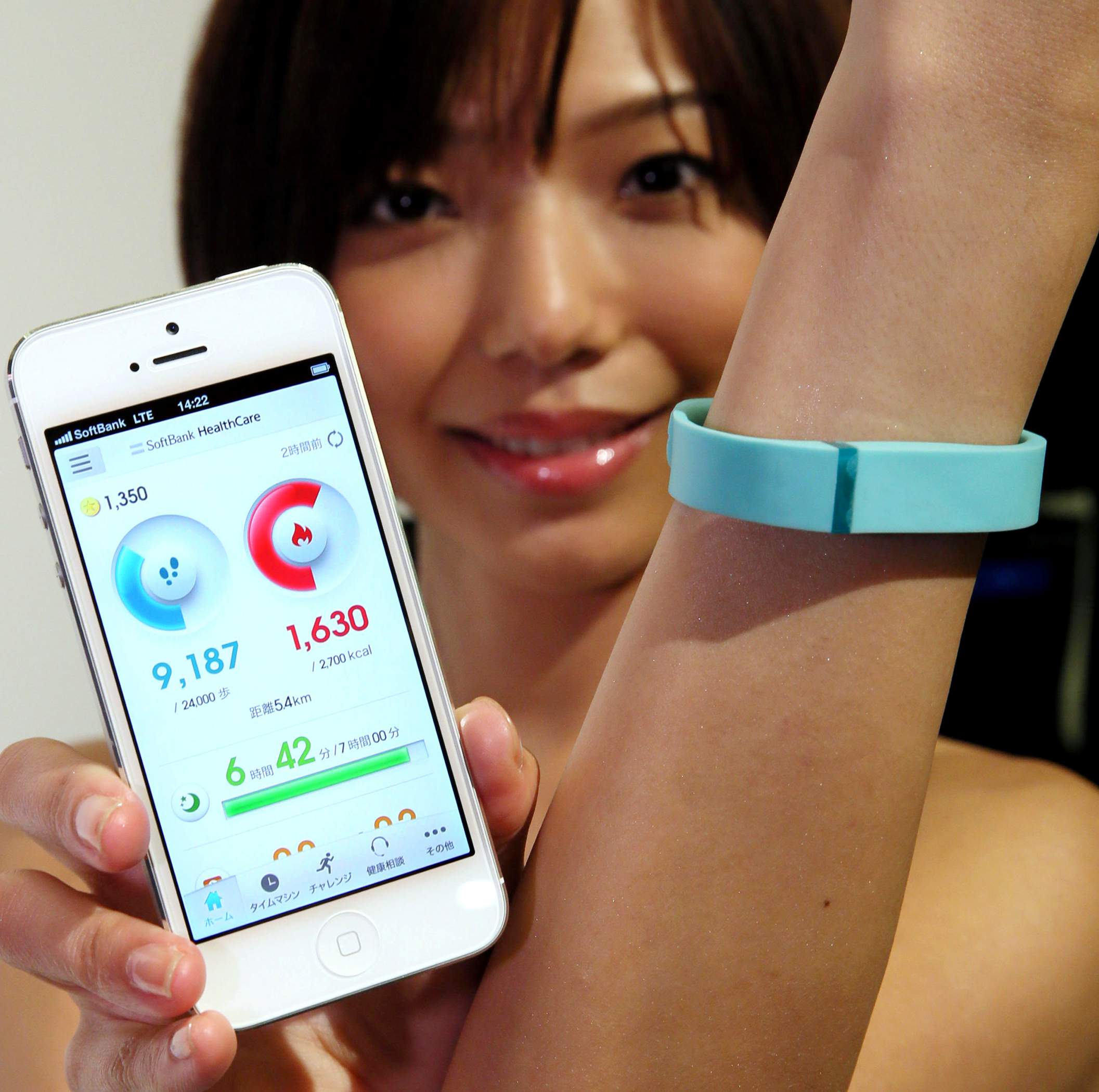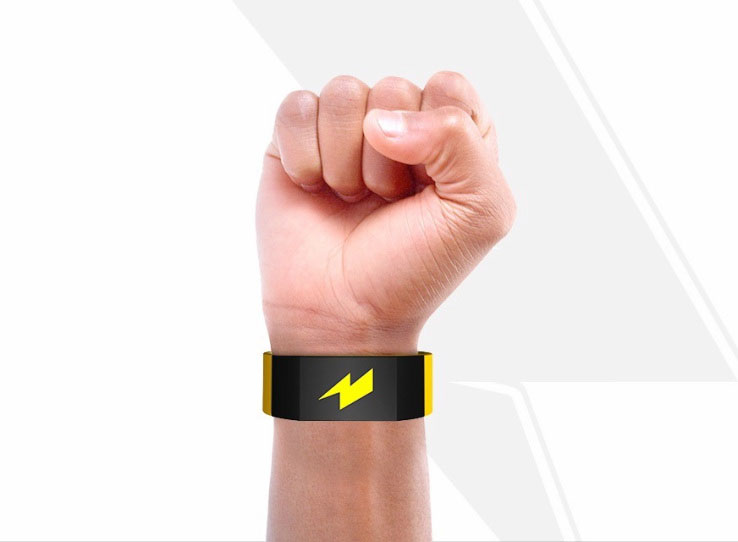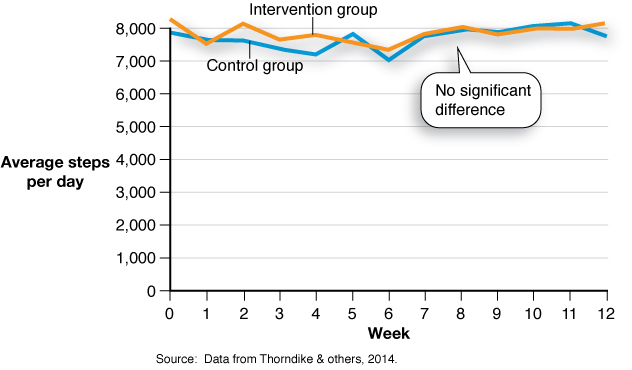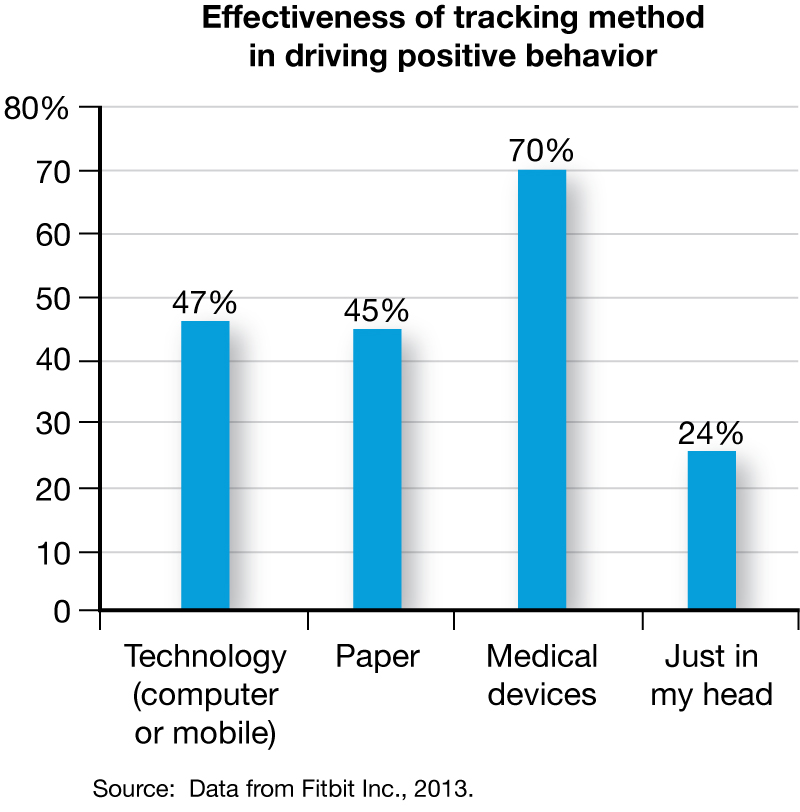Chapter 5. Positive and Negative Reinforcement
5.1 Welcome
Think Like a Scientist
Positive and Negative Reinforcement
By:
Sandra E. Hockenbury
Susan A. Nolan, Seton Hall University
REFERENCES
Colbert, Stephen. (2014, September 8). The Colbert Report. New York: Viacom.
Dusseldorp, Elise; van Genugten, Lenneke; van Buuren, Stef; Verheijden, Marieke W.; & van Empelen, Pepijn. (2014). Combinations of techniques that effectively change health behavior: Evidence from Meta-CART analysis. Health Psychology, 33, 1530–1540. doi:http://dx.doi.org/10.1037/hea0000018
Ledger, Dan, & McCaffrey, Daniel. (2014). Inside wearables: How the science of human behavior change offers the secret to long-term engagement. Endeavour Partners Reports. Retrieved from http://endeavourpartners.net/assets/Wearables-and-the-Science-of-Human-Behavior-Change-EP4.pdf
Lee, Jung-Min; Kim, Youngwon; & Welk, Gregory J. (2014). Validity of consumer-based physical activity monitors. Medicine and Science in Sports and Exercise, 9, 1840–1848. doi:10.1249/MSS.0000000000000287
Lyons, Elizabeth J.; Lewis, Zakkoyya H.; Mayrsohn, Brian G.; & Rowland, Jennifer L. (2014). Behavior change techniques implemented in electronic lifestyle activity monitors: A systematic content analysis. Journal of Medical Internet Research, 16, e192. doi:10.2196/jmir.3469
Patel, Mitesh S.; Asch, David A.; & Volpp, Kevin G. (2015). Wearable devices as facilitators, not drivers, of health behavior change. Journal of the American Medical Association, 313, 459–460. doi:10.1001/jama.2014.14781.
Fitbit, Inc. (2013). Fitbit Healthy Futures Report. Retrieved from http://www.trajectorypartnership.com/wp-content/uploads/2014/02/Fitbit-Healthy-Futures-Report-September-2013.pdf
Thorndike, Anne N.; Mills, Sarah; Sonnenberg, Lillian; Palakshappa, Deepak; Gao, Tian; Pau, Cindy T.; & Regan, Susan. (2014). Activity monitor intervention to promote physical activity of physicians-in-training: Randomized controlled trial. PLOS ONE, 9, e100251. doi:10.1371/journal.pone.0100251
FAQ
What is Think Like a Scientist?
Think Like a Scientist is a digital activity designed to help you develop your scientific thinking skills. Each activity places you in a different, real-world scenario, asking you to think critically about a specific claim.
Can instructors track your progress in Think Like a Scientist? Scores from the five-question assessments at the end of each activity can be reported to your instructor. To ensure your privacy while participating in non-assessment features, which can include pseudoscientific quizzes or games, no other student response is saved or reported.
How is Think Like a Scientist aligned with the APA Guidelines 2.0? The American Psychological Association’s “Guidelines for the Undergraduate Psychology Major” provides a set of learning goals for students. Think Like a Scientist addresses several of these goals, although it is specifically designed to develop skills from APA Goal 2: Scientific Inquiry and Critical Thinking. “Positive and Negative Reinforcement” covers many outcomes, including:
- Use scientific reasoning to interpret psychological phenomena: Ask relevant questions to gather more information about behavioral claims [consider factors that could affect effectiveness of learning techniques]
- Demonstrate psychology information literacy: Interpret simple graphs and statistical findings [compare claim to actual data shown in graph]
5.2 Introduction
This activity invites you to investigate the claim that wearable technology can help you to develop good habits. Specifically, you’ll review the techniques that some of the most popular fitness trackers use to change your behavior, and consider how methods based on learning principles are used to increase their effectiveness. You will then explore the evidence for the usefulness of these devices and whether they can effectively help people meet their fitness goals or change habits. You’ll consider different explanations for the varying results of wearable devices, and also evaluate sources of information about wearables and their effectiveness.
5.3 Identify the Claim
1
Identify the Claim
5.3.1 What are “Wearables”?
Have you noticed people wearing colorful wristbands at the gym? Or checking flashing digital displays on their wrists to see how many steps they’ve walked to class? Wearable technology is big business! More than $300 million was spent on wearable activity trackers in 2013, and the market is expected to grow to $50 billion within a few years (Patel & others, 2015).
Fitbit, Jawbone, Nike Fuelband, Misfit, Garmin, the Apple Watch—these are some of the most popular devices on the market. They promise to help you become a “healthier, better you”—to provide the extra motivation you need to get fit and healthy. These electronic gadgets are often called “wearable technology” or even just “wearables” because you wear them on your wrist, arm, or chest, or attach them to your clothing.

5.3.2 What Do Wearables Do?
All wearables record physical activity. Some also have sophisticated sensors that record heart rate, skin temperature, and movement during sleep. Simple pedometers have been available for years, but these new, sophisticated trackers link up to a smartphone app or computer program to log and analyze your daily activity, like the number of steps you take. Unlike a pedometer, which you can buy for under $15, most wearables are not cheap! They cost $50 to $400 or more.
Makers of wearables promise that their system will help motivate you to reach your goals, whether they are increasing physical activity or cutting calories. Many of them incorporate motivational techniques based on learning theory to motivate you to change your behavior (Lyons & others, 2014). For example, they may use positive reinforcement to encourage healthy behavior by awarding points or badges.

5.3.3 What Do Wearables Promise?
Do wearables work? Promotional materials claim they do. According to a survey commissioned and promoted by Fitbit, “technology-based tracking devices are significantly more effective than traditional techniques in driving positive behavior.” In fact, Fitbit claimed, “nearly half of those who used technology-based tracking devices report strong positive impacts” (Fitbit Inc., 2013).
How is wearable technology advertised? Let’s look at a mock advertisement, developed from real ads for wearables that you may have seen online.

Question
What does the ad claim? We’ll return to your answer later.
5.4 Evaluate the Evidence
2
Evaluate the Evidence
5.4.1 Reinforcing Healthy Behavior
Do wearable activity trackers help people stay motivated to reach their goals? Let’s look at some of the techniques they use. First, all wearables are based on the assumption that seeing your tracked data is in itself a “reward” that reinforces behavior. But they go beyond providing information. For example, suppose you want to exercise more. You pick a specific behavior like climbing stairs. You also set a specific goal—say, 20 flights of stairs a day. As you progress towards your goal, your scoreboard displays encouraging messages or awards points that reinforce the operant behavior of climbing stairs.
This is operant conditioning, in which behavior that is reinforced tends to be strengthened, meaning that it is more likely to be repeated in the future. Along with positive reinforcement, some wearables also incorporate negative reinforcement techniques. Both forms of reinforcement increase a particular behavior, but in negative reinforcement, the behavior is performed in order to avoid an unpleasant consequence.

5.4.2 A “Shocking” Development in Wearable Technology
Most wearables employ rewards and reinforcers, which work to increase a behavior. But from your textbook you will remember that operant learning techniques can be applied to decrease behaviors too. One device called Pavlok can be programmed to deliver punishment, such as a painful (but not harmful) electric shock when you fail to get out of bed on time. A behavior that is punished tends to decrease and is less likely to be repeated in the future. How many times would you need to be shocked before you stopped oversleeping?

5.4.3 Challenge Yourself!
Can you identify the elements of operant conditioning that are being used by expensive wearables? Challenge yourself to a test! Click to begin, and see if you can correctly identify the consequences being delivered. You’ll get five points for each correct answer. Earn 25 points to become a Conditioning Master! (But don’t worry, unlike a wearable that stores your data, your score won’t be recorded or submitted to your instructor.) You must complete all 8 questions in order to advance to the next screen.
5.4.4 Sources of Evidence
Now that you know more about how wearables are supposed to work, consider a different question. Do you think wearables effectively help people change their behavior? Earlier in this activity, after thinking about promotional materials for wearables, you identified their claim. Are such materials a credible source for a statement on wearables’ effectiveness? Thinking like a scientist, which of the following would you consider to be valid sources of evidence for such a question? Choose all that apply.
Question 1.
| A. | your best friend who lost five pounds after using a wearable for six weeks |
| B. | research published in a peer-reviewed journal that compared weight loss in participants who used activity trackers versus those who did not |
| C. | a magazine article featuring the success stories of five people who used wearables to meet their fitness goals |
| D. | an experiment comparing activity levels in two groups: (1) participants who wore wearables that displayed tracked data, and (2) participants who wore wearables that did not display tracked data |
| E. | an online advertisement featuring a woman who stopped biting her nails in one week by using a wearable that delivered electric shocks |
5.4.5 Testing the Claim
Let’s look at a scientific study that did examine the claim that wearables are effective in helping people change behavior. Researcher Linda A. Thorndike and her colleagues (2014) conducted an experiment in which over 100 medical residents were randomly assigned to one of two groups. The intervention group received normal Fitbits that displayed visual feedback about the individual’s daily activity level, as measured in steps taken. The Fitbits also showed an avatar that grew larger with activity and got smaller with inactivity. But the control group received “blinded” Fitbits, which tracked the participants’ activity levels but did not display data. To encourage use of the Fitbits, residents who wore the trackers for 5 days out of 7 were entered into weekly lotteries for $10 gift cards.
Three examples of reinforcement were being applied in this study. Match each example to the group to which it was being applied.
Question 2.
Opportunity to win a $10 gift card
| A. |
| B. |
| C. |
Seeing tracked data on the Fitbit
| A. |
| B. |
| C. |
Watching avatar grow on the Fitbit
| A. |
| B. |
| C. |
5.4.6 The Results
The researchers hypothesized that participants who were randomly assigned wearables that provided reinforcement would have increased physical activity as compared to participants whose wearables did not provide reinforcement.
What is your prediction? If you believe claims made by makers of wearables, the number of steps should have been higher in the intervention group. In fact, the researchers found that all the residents increased their level of physical activity. But there was no significant difference between the two groups. In other words, feedback from the wearables had no significant effect on activity levels. As you can see in the graph, the activity levels of the two groups were essentially identical.

5.4.7 The Problem with Wearables
Of course, this is just one study. But to date there is little scientific evidence to suggest that wearables are actually effective at motivating people to change their behavior over the long term. In general, it’s the people who are already highly motivated who find wearables to be the most helpful (Dusseldorp & others, 2014).
Usage is an additional obstacle. The medical residents in Thorndike’s study were highly motivated, yet even in this group, usage of the wearables dropped from 77% to 60% after just 6 weeks (Thorndike & others, 2014). An independent survey found that more than half of those who had owned a wearable stopped using them, and a third of them did so within the first six months (Ledger & McCaffrey, 2014). The need to program, sync up, charge, and adjust complicated wearables discourages many users (Patel & others, 2015). Put simply, when the novelty wears off, wearables are left at home.

5.5 Consider Alternative Explanations
3
Consider Alternative Explanations
5.5.1 Why Didn’t the Wearables Influence Behavior?
The study with medical residents demonstrated that the reinforcement delivered by wearables had no effect on the residents’ behavior. Based on this evidence, you could conclude that learning techniques like reinforcement are simply not very effective for changing complex behavior. But that conclusion contradicts the vast psychological literature demonstrating the effectiveness of such learning techniques in influencing behavior in many settings—from classrooms to the workplace.
When one conclusion appears to contradict established scientific knowledge, it’s important to think like a scientist and consider alternative explanations. One explanation could be that learning techniques are most effective in a controlled, laboratory setting. After all, a rat in a Skinner box doesn’t have a lot of options. It’s either press the bar or go hungry. Humans, however, can choose among a vast array of available reinforcers, like snacks, video games, or hanging out with friends.

5.5.2 “Reinforcers” that Aren’t
Another possible explanation may involve the type of reinforcer. It could be that wearables’ rewards simply are not very reinforcing to all users. Think about the “Conditioning Master” game you played earlier in this activity. Which reinforcement most motivated you to complete every question—the chance to earn abstract points, or the requirement to complete the test in order to move on? In the study with medical residents, the chance to win a $10 gift card clearly wasn’t considered valuable enough to affect behavior. Would a more potent reinforcer—like a $100 gift card, or time off from work—have increased compliance?
Reinforcers must maintain their value to continue to be effective. But as the novelty of wearing an expensive wearable wears off, so may the appeal of racking up points and winning badges.

5.5.3 When Incentives Decrease Motivation
Reinforcers that are effective in some situations can backfire in others. Incentives are designed to reward success, but users who fail to meet their goals may become discouraged and give up. As comedian Stephen Colbert observed, “the synchronized Pavlok app will also zap you where it really hurts because if the user hasn’t completed their goal . . . it posts on your Facebook wall, ‘I didn’t make it to the gym today.’ Yeah, that is just the motivation you need. When you’re in a dark place, alone at home, out of shape and too tired, overweight or depressed to work out, it’s probably because you weren’t getting enough public humiliation” (2014).
If you don’t find a program’s incentives to be reinforcing, they probably won’t help you over the long term. Determine what reinforcers would be rewarding to you, and try to incorporate them into your routine.

5.6 Consider the Source of the Research or Claim
4
Consider the Source of the Research or Claim
5.6.1 Revisiting the Fitbit Survey’s Claims
Given the scientific evidence on wearables, are you beginning to question some of the claims made by companies that market wearables? Let’s take a closer look at the Fitbit survey quoted at the beginning of this activity. For the record, this survey was not reported in a scientific journal. It was reported in a Fitbit publication. And there were numerous problems with the survey methodology. We’ll address one issue here.
The report claimed that respondents felt technology-based tracking was “twice as effective as traditional tracking methods in driving positive behavior” (Fitbit Inc., 2013). But, compare this statement to the actual data shown in the graph below. Is this a valid claim? Take a look at the graph and compare results for all the different groups. Then answer the question.

Question 3.
Based on the data presented, it appears that survey respondents:
| A. |
| B. |
| C. |
| D. |
5.6.2 The Bottom Line
Are you surprised that the survey data don't really support the report’s claims? Remember that this survey was commissioned by Fitbit, maker of one of the leading wearables on the market. Rather than being published in a peer-reviewed scientific journal, it appeared in a Fitbit marketing report for the general public. Whenever a survey or study is commissioned by a sponsor or company associated with a particular product, think like a scientist and be extra cautious in interpreting the results. Why? Because the company has a vested interest in emphasizing the value of its product or services.
The reinforcement provided by wearable technology can indeed be helpful in motivating positive behaviors. However, the ultimate responsibility for determining whether it is the most effective method for you rests squarely on the shoulders (and wrists?) of the user.

5.7 Assessment
Assessment
5.7.1 Assessment
Question
Activity trackers that use points, badges, public recognition or other types of awards to reward specific behaviors utilize the psychological principles of:
| A. |
| B. |
| C. |
| D. |

